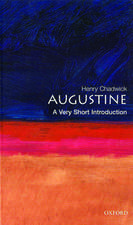The Invisible God: The Earliest Christians on Art
Autor Paul Corby Finneyen Limba Engleză Paperback – 6 noi 1997
| Toate formatele și edițiile | Preț | Express |
|---|---|---|
| Paperback (1) | 309.78 lei 31-38 zile | |
| Oxford University Press – 6 noi 1997 | 309.78 lei 31-38 zile | |
| Hardback (1) | 704.56 lei 31-38 zile | |
| Oxford University Press – 13 oct 1994 | 704.56 lei 31-38 zile |
Preț: 309.78 lei
Preț vechi: 335.45 lei
-8% Nou
Puncte Express: 465
Preț estimativ în valută:
59.27€ • 61.89$ • 49.06£
59.27€ • 61.89$ • 49.06£
Carte tipărită la comandă
Livrare economică 24-31 martie
Preluare comenzi: 021 569.72.76
Specificații
ISBN-13: 9780195113815
ISBN-10: 0195113810
Pagini: 352
Ilustrații: numerous halftones and line figures
Dimensiuni: 155 x 234 x 20 mm
Greutate: 0.59 kg
Ediția:Revised
Editura: Oxford University Press
Colecția OUP USA
Locul publicării:New York, United States
ISBN-10: 0195113810
Pagini: 352
Ilustrații: numerous halftones and line figures
Dimensiuni: 155 x 234 x 20 mm
Greutate: 0.59 kg
Ediția:Revised
Editura: Oxford University Press
Colecția OUP USA
Locul publicării:New York, United States
Recenzii
Well-documented scholarly monograph.
a monograph which is scholarly to an extreme, not only mastering all the primary texts but also surveying with exemplary elegance the conclusions and discussions of more than a hundred years of scholarship in German, French, English and Italian. Indeed, Finney is at his best when unpicking the unwarranted assumptions made by the historiography of the field.
Some of the author's best discussions are those to be found within the general framework. He is an authority on early Christian lamps ... Likewise on the vexed question of the San Sebastiano site and its development there is a clear and helpful discussion. The learning displayed throughout is immense, and the organization of such a vast amount of material is achieved without sacrificing the clarity of structure which makes the book easy to read. It integrates the results of recent work in an impressive manner, mostly in the form of notes ... an interesting and informative book.
a monograph which is scholarly to an extreme, not only mastering all the primary texts but also surveying with exemplary elegance the conclusions and discussions of more than a hundred years of scholarship in German, French, English and Italian. Indeed, Finney is at his best when unpicking the unwarranted assumptions made by the historiography of the field.
Some of the author's best discussions are those to be found within the general framework. He is an authority on early Christian lamps ... Likewise on the vexed question of the San Sebastiano site and its development there is a clear and helpful discussion. The learning displayed throughout is immense, and the organization of such a vast amount of material is achieved without sacrificing the clarity of structure which makes the book easy to read. It integrates the results of recent work in an impressive manner, mostly in the form of notes ... an interesting and informative book.













